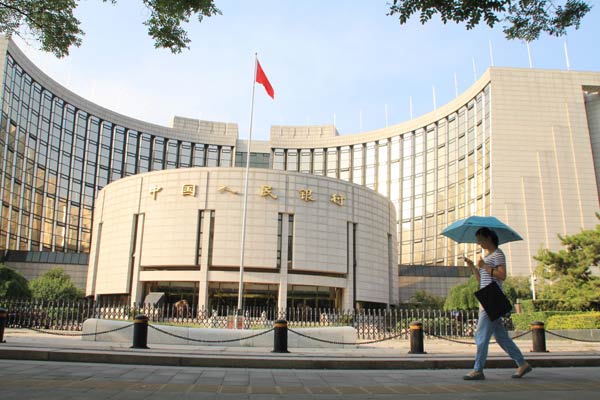Expert calls for better coordination of monetary policy tools
 |
|
The headquarters of the People's Bank of China in Beijing. [Photo by Shi Yan/China Daily] |
BEIJING - The central bank needs to better coordinate short and long-term monetary policy tools to ensure stable liquidity and stimulate the economy, an expert has said.
"Having accumulated ample policy ammunition, the central bank should better use different tools in the next step," Li Jianjun, an analyst with Bank of Kunlun, told Financial News, a newspaper under the People's Bank of China (PBOC)."Frequent open market operations allow the PBOC to keep liquidity stable while keeping its slightly cautious stance, and also rein in speculation caused by excess short-term capital."
Reverse repos, basically securities trading agreements between the PBOC and commercial banks, are the most frequently-adopted open market operation to inject liquidity into the market for a short period.
To meet rising cash demand ahead of the Lunar New Year holiday, a total of 1.19 trillion yuan ($170 billion) was pumped into the market through repos last week, the largest on record.
Other short-term tool, such as the standing lending facility and medium-term lending facility, differ in collateral and term.
Li believes that the central bank should use more re-lending facilities to maintain moderate liquidity in a bid to drive up investment and prop up the real economy.
In December, the PBOC provided liquidity worth 41.5 billion yuan to China's three policy banks through pledged supplementary lending (PSL), a long-term facility introduced in 2014. Outstanding PSL stood at more than 2 trillion yuan by the end of last year.
The PBOC has pledged to maintain prudent monetary policy in 2017, with better adjustments to monetary policy to ensure stable liquidity, echoing the tone set at the Central Economic Work Conference last month.
"China's prudent monetary policy has led to positive results," Li said, citing steady economic growth, low inflation and stable employment.
But he called for more efforts to improve the effectiveness of the policy, such as creating more financing channels for cash-starved small firms.























